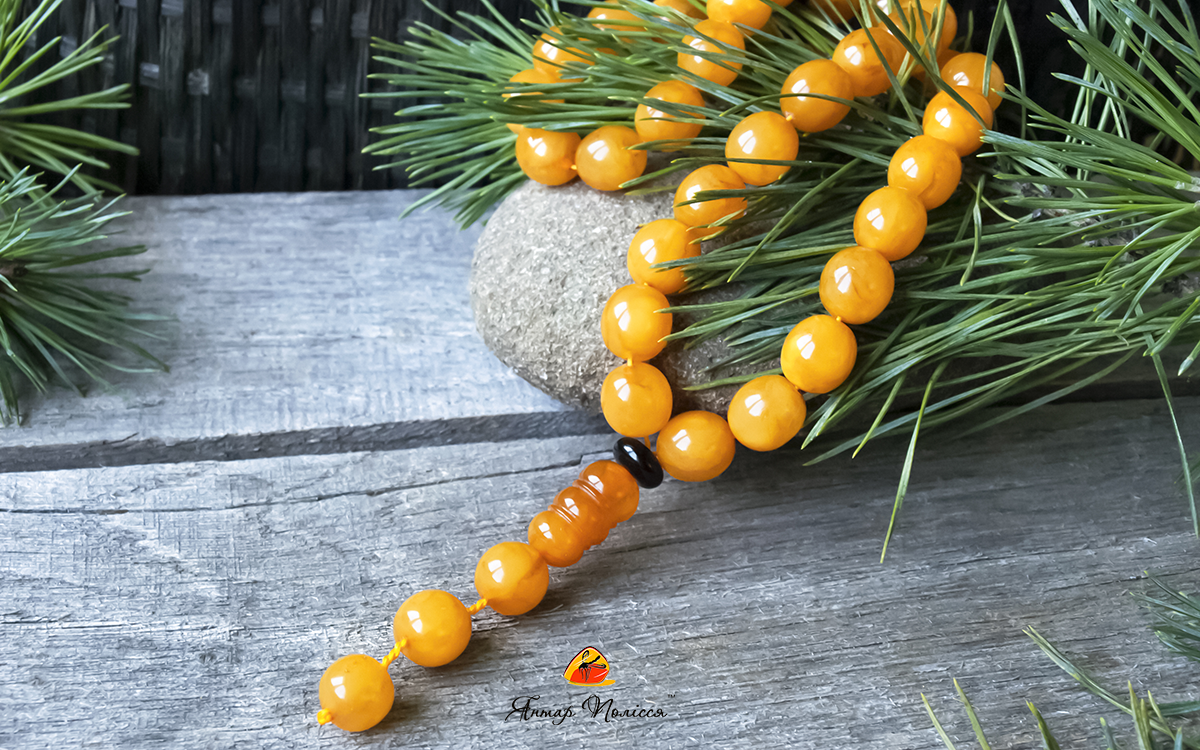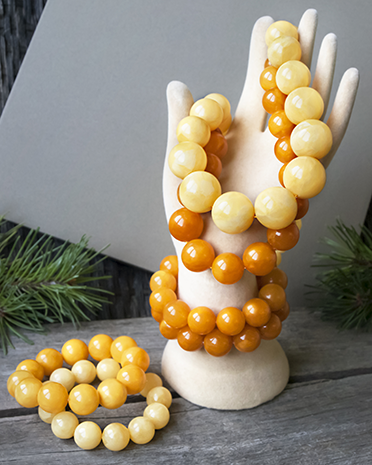| Home | Showcase | Ongoing Research | Abstracts |Events |Contact Us |Awards | Sponsors Speak | News |
The magic of solar gems is how crumbs turn into stones |
|
|
Solidified resin has always been valued by jewelers, geologists, archaeologists, and even physicians. Therefore, people have long tried to put into operation very tiny pieces of it. And from our articles on ukrburshtyn.com web, you will learn how to get exclusive reconstructed amber!
Characteristics of the stoneGold gems belong to a rare category of substances - organic minerals. This means that they arose as a result of the activity of living organisms, but due to the conditions of the surrounding world, they lost their initial properties and transformed into something fundamentally different. Like pearls, mother-of-pearl, coral, and ozokerite ("rock wax," a subtype of bitumen), amber is composed of carbon compounds that do not have a crystalline structure—it is an amorphous framework polymer. However, fossil resin still has some features of a precious stone. Yes, it polishes well and leaves a white line when the shard is run over sandpaper. According to the Mohs scale (a method of assessing how difficult it is to scratch the surface of an object, proposed in 1811), the hardness of shimmering gems is 2-2.5; for comparison, this indicator is 10 for a diamond, 6.5 for a steel nail, 5.5 for a table knife, and 2 for a human fingernail. And their density is from 1.05 to 1.096 g/cm3, which makes cabochons (rounded polished fragments of amber) sink in ordinary water, but float in salt water. Therefore, on the Baltic coast, they were caught in the surf after storms that literally plowed the seabed. And here are the unique qualities of radiant gems:
Contains healing trace elements (iodine, potassium, magnesium, sulfur, manganese, chromium, selenium and cobalt), as well as a powerful antiseptic, antioxidant and stimulant - succinic acid and oil. These substances are released under the influence of heat - say, in contact with your skin - and have a beneficial effect on well-being, preventing diseases, increasing immunity, slowing down aging and normalizing the functions of the endocrine, cardiovascular, musculoskeletal and nervous systems. Origin and improvement of technologyIt is unclear when and who first dared to throw solar gems into the fire to melt them. However, the ancient Roman historian and naturalist Publius Cornelius Tacitus (55-120) already mentioned such a procedure as a well-known fact: "a stone ... burns with a crackle, like a resinous tree and gives off a strong and fragrant flame, and then it is drawn in the form of a boil." For such processing, artisans placed small cabochons in special crucibles and poured honey or linseed oil over them. Most of these operations ended in failure, but even the few successful ones were enough for jewelry needs - aristocrats were happy to wear fibulas (fasteners for clothes), pins, and necklaces made of pressed amber. And in the Middle Ages similar experiments were conducted by Arab scientists - Abu Ali ibn Sina (Avicenna), Muhammad ar-Razi, Hunayn ibn Ishaq. In 1763, similar techniques were used during the construction of the famous Amber Room to make wall panels and mirror frames. For this purpose, the artisans ordered copper boilers and barrels with steam release valves from Germany. The real breakthrough occurred only in the 19th century. Maurice Becker, a businessman and philanthropist from East Prussia, who became famous for his innovative methods of extracting hardened resin in Königsberg (Kaliningrad) and on the Curonian Spit (now in Russia), did not want to lose a single gram of the precious "harvest". And on his initiative, the Austrian chemists Spiller and Trebych in 1881 invented an original means of disposal of "small fractions" - cabochons with a diameter of less than 5 mm. To do this, the gems were crushed almost into a powder or to the size of a rice grain and poured into an airtight container. It was reliably isolated from the external environment so that extraneous impurities did not spoil the final product, and then subjected to pressure. At first, it was immersed in hot paraffin or glycerin, but in order to reduce energy consumption and wear and tear of the mechanisms (the transformation of the amber mass into a liquid requires extremely high pressure of up to 50 MPa - about 3 tons per cm3), oxygen was pumped out and pressed with a moving piston. As it slowly descends, it changes the physical parameters of the stones – they become fluid, merge into one whole and are pushed out through the holes in the bottom of the tank. Ingots (as a rule, which look like flat washers and long cylinders) must cool on their own within 6-12 hours - if the process is artificially accelerated, they will crack and become cloudy. Features of modified gemsIs pressed amber natural? Yes, such cabochons, called ambroids, are completely identical to those extracted from the bowels of the earth. And it is not surprising - because, in fact, it is solidified resin, only in a different configuration. It is suitable for jewelry, interior accessories, and for the construction of medical devices or heavy industry machines. Such manipulations reduce the amount of waste and make it possible to use limited natural resources as efficiently as possible, reducing the burden on the biosphere. Extra-class precious stones are divided into pressed (from amber "flour" with uniform grains of 1-5 mm; this is necessary for the finished gem to have an intense and pure color) and molded - from 2-7 small cabochons. In the latter, most likely, the boundaries between the elements will be visible, but this gives the thing an additional charm - the delicately bending outlines protrude from the mysteriously glistening layer, emphasizing its depth.
But, no matter which group your sample belongs to, it surely has the following advantages:
A wide range of applications – from traditional pendants, necklaces, bracelets and rosaries to parts for cars, helicopters, trains and space rockets. Balloons for blood storage and transfusion are also cast from viscous resin - its components inhibit hemolysis (death of erythrocytes - cells that carry hemoglobin), spare parts for X-ray machines, MRI units and radiation control monitors. And already in everyday life, cabochons can be turned into anything - mouthpieces of smoking pipes, eyeglass frames, cane knobs, lampshades, candlesticks, fork and spoon handles, chronometer cases and much more. How to distinguish pressed amber from natural?First of all, it should be noted that such a question is incorrect - the chemical formula of the reconstructed stones is 100% identical to the whole one. They also have a therapeutic effect, purify the air from bacteria and toxins, soothe, instill happiness and peace of mind in the soul, and perfectly shade your beauty. However, there are a couple of tricks that will help you recognize which type of gem you got:
Visual inspection was once thought to be informative as well. But in this way, only low-quality imitations can be detected - those where dye was added (this is evidenced by contrasting spots and sharp transitions between tones) or the heating regime was not followed (in such cases, the stones are speckled with cobweb-thin chips). If a cluster of round bubbles is visible in the gem, it was not created in a vacuum, as it should be, but with access to hydrogen and nitrogen, and elongated ones signal uneven squeezing (it is also dangerous because it forms invisible stress points, along which cabochons sometimes suddenly split ). A really good stone does not have any of the listed defects! They are just as bright and colorful, playing with dozens of colors and whimsically refracting light, strengthening your health, driving away despair, apathy and neuroses. This is an ideal option for those who care about nature, but do not want to deprive themselves of their favorite gem products. Now, having familiarized yourself with how pressed amber is made, what kind of material it is and what are its advantages, you will purchase such creations without fear of counterfeiting. But for this you also need a verified, certified supplier - such as our authentic online store! Beautiful necklaces, rings, pendants, paintings, icons, VIP souvenirs and hundreds of other products are presented here - choose what you like and let this thing give you peace, joy and positive emotions. |
||
 |
 |
This event is brought to you by COGS and Michigan State University. | |

